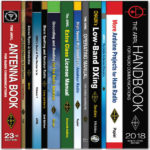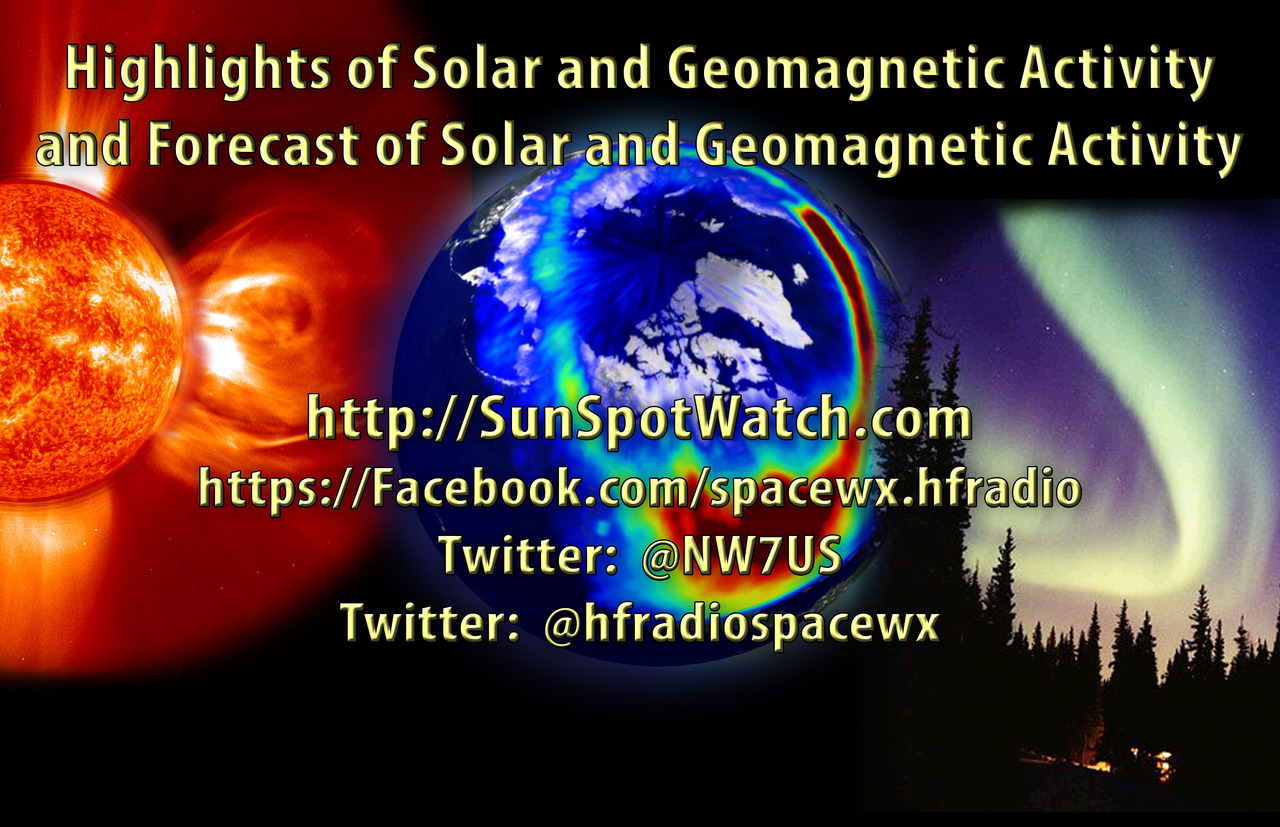 The Spectrum Monitor — October, 2018
The Spectrum Monitor — October, 2018
 Stories you’ll find in our October, 2018 edition:
Stories you’ll find in our October, 2018 edition:
Tracing the Development of the AM Broadcast Transmitter
John F. Schneider W9FGH
In the Beginning, there was King Spark. There were a few early attempts at using spark equipment to transmit the human voice. This was because a spark signal consists of a continuous sequence of decaying waves, called “damped waves.” The signal faded in intensity as the energy of each spark dissipated, until it was replaced by a new signal from the next spark. In the early 1900s, there were only two devices that were capable of generating a continuous wave – an arc transmitter and a high-frequency alternator. But it was the invention of the “Audion” triode vacuum tube by Lee de Forest in 1906 that created a revolution in radio communications. Its ability to function as both an oscillator and amplifier opened doors to the creation of a practical all-electronic speech transmitter. John takes a detailed look at the evolution of the AM broadcast transmitter.
Has it Really Been a Decade!?
By Troy J. Simpson W9KVR
There’s nothing easy about teaching school anywhere but teaching, coaching, keeping a school amateur radio club going, being a dad and a husband makes time really fly. So much so that Glenn Raymond Middle School teacher, Troy Simpson, hadn’t realized their club station license was already up for renewal until he received the notice from the FCC. Troy recaps just the last few years of this very active and successful amateur radio school club as he prepares this month for another School Club Roundup.
SDR Report Part 3: From High-End SDR Receivers to SDR Transceivers
By Thomas Witherspoon K4SWL
Part one of our series on Software Defined Radios (SDRs), which appeared in the June issue, focused on the nomenclature and components of a functioning SDR system. Part two, in the July issue, took a look at some affordable SDR station options that would propel you into the world of SDRs for less than $200 US. This month, Thomas dives a little deeper into the SDR rabbit hole, and investigates higher-end SDRs as well as ham radio transceivers with embedded SDRs that include high-ticket rigs that have intel-agency specs and capabilities you won’t find in any analog radio at any price.
A Visit to the Tokyo Ham Fair 2018
By Keith Baker KB1SF/VA3KSF
Once again, Keith was asked to join the Dayton Amateur Radio Association team in a trip to Japan to attend the annual Tokyo Ham Fair, which is sponsored by the Japan Amateur Radio League (JARL). As Secretary-Treasurer of AMSAT North America, Keith would be doing double duty during this trip. And, as a regular contributor to TSM, Keith nailed the trifecta with this photo essay of that trip. Keith renewed many old acquaintances, got up close and personal with new ham equipment and enjoyed handing out goodies to everyone he saw.
Scanning America
By Dan Veeneman
Hialeah, Florida, and a Public Service Radio Feud
Federal Wavelengths
By Chris Parris
Hurricane Florence Response
Milcom
By Larry Van Horn N5FPW
Monitoring the US Coast Guard and the COTHEN HF Radio Network
Utility World
By Hugh Stegman
US Coast Guard Mobilizes for Hurricane Florence
Shortwave Utility Logs
By Hugh Stegman and Mike Chace-Ortiz
VHF and Above
By Joe Lynch N6CL
International Space Station Astronauts are Calling CQ Students
Digitally Speaking
By Cory GB Sickles WA3UVV
Nothing Changes if Nothing Changes
Amateur Radio Insights
By Kirk Kleinschmidt NT0Z
Transmit Audio—How’s Your Sound?
Radio 101
By Ken Reitz KS4ZR
Viasat: Help for Rural Broadband Access
The World of Shortwave Listening
By Andrew Yoder
US and International Pirate Shortwave Broadcasters
The Shortwave Listener
By Fred Waterer
Creepy October Shortwave Programming
Maritime Monitoring
By Ron Walsh VE3GO
Stormy Weather and Changing Times
The Longwave Zone
By Kevin O’Hern Carey WB2QMY
SDR, Step One
Adventures in Restoration
By Rich Post KB8TAD
Reviving a Comanche: The Siltronix 1011D
Antenna Connections
By Dan Farber AC0LW
Artificial Ground, Part Two
Radio Horizons
Review: National Radio Club’s 39th Edition AM Radio Log
By Larry Van Horn N5FPW
The Spectrum Monitor is available in PDF format which can be read on any desktop, laptop, iPad®, Kindle® Fire, or other device capable of opening a PDF file. Annual subscription is $24. Individual monthly issues are available for $3 each.
Ken Reitz, KS4ZR, is publisher and managing editor of The Spectrum Monitor. Contact him at [email protected].
 LHS Episode #250: Amateur Radio Resources Deep Dive
LHS Episode #250: Amateur Radio Resources Deep Dive
 Welcome to the 250th episode of Linux in the Ham Shack. On this milestone episode, we return to basics. We spend some time talking about resources for amateur radio on a variety of topics: testing and licensing, community and emergency involvement, elmering, learning, news, information gathering, hardware from parts to rigs to everything in between and where to go when all else fails. Thank you for listening and being supportive of our humble podcast.
Welcome to the 250th episode of Linux in the Ham Shack. On this milestone episode, we return to basics. We spend some time talking about resources for amateur radio on a variety of topics: testing and licensing, community and emergency involvement, elmering, learning, news, information gathering, hardware from parts to rigs to everything in between and where to go when all else fails. Thank you for listening and being supportive of our humble podcast.
73 de The LHS Crew
Russ Woodman, K5TUX, co-hosts the Linux in the Ham Shack podcast which is available for download in both MP3 and OGG audio format. Contact him at [email protected].
 Weekly Propagation Summary – 2018 Oct 01 16:10 UTC
Weekly Propagation Summary – 2018 Oct 01 16:10 UTC
Here is this week’s space weather and geophysical report, issued 2018 Oct 01 0253 UTC.
Highlights of Solar and Geomagnetic Activity 24 – 30 September 2018
Solar activity was at very low levels throughout the period. Region 2723 (S08, L=356 class/area Dro/030 on 30 Sep) developed on 29 Sep, but was already showing signs of decay as of this report, and remained inactive. No Earth-directed CMEs were observed in available satellite imagery.
No proton events were observed at geosynchronous orbit.
The greater than 2 MeV electron flux at geosynchronous orbit reach high levels on 24 – 28 Sep, then decreased to moderate levels on 29 – 30 Sep. A peak flux of 6,202 pfu was observed on 24/2020 UTC.
Geomagnetic field activity was at quiet to unsettled levels throughout the entire period, from 24 – 30 Sep, under very subtle CH HSS influence. Solar wind speeds averaged near 430 km/s through most of the period, but did see an increase to reach a peak of 505 km/s on 30/0158 UTC. Total field strength ranged between 1 nT to 7 nT, while the Bz component was variable between +/- 6 nT through the period.
Forecast of Solar and Geomagnetic Activity 01 October – 27 October 2018
Solar activity is expected to be at very low levels throughout the outlook period, with a slight chance for C-class flare activity.
No proton events are expected at geosynchronous orbit.
The greater than 2 MeV electron flux at geosynchronous orbit is expected to be at moderate levels from 1 – 8 Oct, and again from 26 – 27 Oct. High levels are expected from 9 – 25 Oct following elevated solar wind speeds associated to recurrent CH HSS activity.
Geomagnetic field activity is expected to be at quiet to unsettled levels from 1 – 6 Oct, with isolated active levels likely on 1 Oct. Conditions are then expected to reach G1 (Minor) storm levels on 7 – 8 Oct, with G2 (Moderate) storm levels likely on 8 Oct, due to a positive polarity CH HSS. A brief return to unsettled levels is likely on 9 Oct, with G1 (Minor) storm levels likely returning on 10 Oct as CH HSS effects persist. Active levels are expected on 11 Oct as CH HSS effects taper off. Mostly quiet to unsettled levels are expected from 12 – 18 Oct, with isolated active periods likely on 14 and 18 Oct. G1 levels are likely again on 19 Oct as another CH HSS influences the magnetic field. Isolated active periods are expected early on 20 Oct before conditions decrease to be at mostly unsettled levels throughout the remainder of the outlook period (21 – 27 Oct) as CH HSS effects continue to wane.
Don’t forget to visit our live space weather and radio propagation web site, at: http://SunSpotWatch.com/
Live Aurora mapping is at http://aurora.sunspotwatch.com/
If you are on Twitter, please follow these two users: 1. https://Twitter.com/NW7US 2. https://Twitter.com/hfradiospacewx
– – – – – – – – – – – – –
Be sure to subscribe to our space weather and propagation email group, on Groups.io
https://groups.io/g/propagation-and-space-weather
Spread the word!
– – – – – – – – – – – – –
Links of interest:
+ Amazon space weather books: http://g.nw7us.us/fbssw-aSWSC
+ https://Twitter.com/NW7US
+ https://Twitter.com/hfradiospacewx
Space Weather and Ham Radio YouTube Channel News:
I am working on launching a YouTube channel overhaul, that includes series of videos about space weather, radio signal propagation, and more.
Additionally, I am working on improving the educational efforts via the email, Facebook, YouTube, Tumblr, and other activities.
You can help!
Please consider becoming a Patron of these space weather and radio communications services, beginning with the YouTube channel:
https://www.patreon.com/NW7US
The YouTube channel:
https://YouTube.com/NW7US
..
Visit, subscribe: NW7US Radio Communications and Propagation YouTube Channel
 Ham College 45
Ham College 45
Ham College episode 45 is now available for download.
General Amateur Radio Exam part 16. More Skywaves and more HF Antennas.
01:24:31
Download
YouTube
George Thomas, W5JDX, is co-host of AmateurLogic.TV, an original amateur radio video program hosted by George Thomas (W5JDX), Tommy Martin (N5ZNO), Peter Berrett (VK3PB), and Emile Diodene (KE5QKR). Contact him at [email protected].
 ICQ Podcast Episode 277 – The Classic Bird 43 Wattmeter
ICQ Podcast Episode 277 – The Classic Bird 43 Wattmeter
In this episode, Martin M1MRB is joined by Chris Howard M0TCH, Dan Romanchik KB6NU, Martin Rothwell M0SGL, Ed Durrant DD5LP and Frank Howell K4FMH to discuss the latest Amateur / Ham Radio news. Colin M6BOY rounds up the news in brief, and this episode’s feature is - The Classic Bird 43 Wattmeter.
ICQ AMATEUR/HAM RADIO PODCAST DONORS
We would like to thank David Hartley (RS314170), Philip Heckingbottom (VK6ADF) and an anonymous donation and our monthly and annual subscription donors for keeping the podcast advert free. To donate, please visit - http://www.icqpodcast.com/donate
- EI Station Works Japan on 70cms Moonbounce for EI First
- Moon Bounce on a Dipole
- Ofcom Issues M5 prefix Calls Again
- Spectrum Management and the Impact on Amateur Radio
- FCC to Impose Two-Way VHF/UHF Radio Restrictions
- Swedish Amateur Radio Regulation Changes
- Russia Proposes DRM on 65.9-74.0 MHz
- ExseedSat Ham Radio FM Transponder Satellite
Colin Butler, M6BOY, is the host of the ICQ Podcast, a weekly radio show about Amateur Radio. Contact him at [email protected].
 SOTA Activation: Mount Emma or Emma Burr Mountain (W0C/SP-127)
SOTA Activation: Mount Emma or Emma Burr Mountain (W0C/SP-127)
There is a SOTA (Summits On The Air) summit just north of Tincup Pass with an elevation of 13,538 feet. The SOTA database (W0C/SP-127) says the name is Mount Emma but all of my maps indicate that it is Emma Burr Mountain. (I contacted the W0C Association Manager and we’re working it out.)
Joyce/K0JJW and I did the first activation of this summit in late September. The weather was wonderful except for the wind that pounded us anytime we were exposed on a ridgeline, which is to say it happened a lot. We started our ascent from Tincup Pass, which is at 12,154 feet on the Continental Divide (see photo). I’ve seen trip reports of people hiking this summit from the northeast (Mineral Creek area) accessible by South Cottonwood Road (FS 344), so that may be another option.

At Tincup Pass, there is an obvious trail leading off the the east. We followed this trail uphill for a while and then diverted off to the north towards the north/south ridgeline and Tincup Peak. Tincup Peak is not a SOTA summit and is not shown on all maps. It is a13,345 foot bump on the ridge heading north. Our entire hike followed the Continental Divide, always a real treat.

We followed the top of the ridge for the most part, occasionally dropping down a bit on the west side to avoid obstacles. Occasionally we followed a faint trail but for the most part this was off-trail hiking, often with significant rocks to climb over.

Once we got on top of the ridgeline, we could see our actual objective of Emma Burr (see photo below). The saddle between Tincup Peak and Emma Burr dropped down more than I expected from viewing the topo map, so we soon realized that we’d have to lose substantial elevation and then climb to get it back. Oh, well.

Once on the summit of Emma Burr, I pulled out the 2m FM station and started calling CQ on 146.52 MHz. We had no mobile phone coverage at Tincup Pass but once we got on the ridge, Verizon was working pretty well so I spotted us on Sotawatch. Our best DX was Dave/N0KM near Center, CO for a distance of 70 miles. Other stations worked: W0BV, W0RW, N1TEW, K0MGL, K0TG, KB0QEP, KL7GLK, N0EVH, KD0VHD and W0DLE. Lots of stations on 2m FM that day. I tried working W0RW on 1.2 GHz FM but we could not quite make it. I definitely heard him right at the noise floor but my 1 watt signal was not readable on his end.

My GPS app on the smartphone says that the one-way climb is 2.4 miles with 1600 vertical feet. The elevation difference between Tincup Pass (12,154) and Emma Burr (13,538) is 1384 feet, but the saddle costs you another 300 vertical feet of climbing.
Overall, it was a great day in the mountains. We knocked out two 13ers in one day and did a first SOTA activation. However, the wind pounded us quite well so we were plenty tired when we got back to our vehicle.
73 Bob K0NR
The post SOTA Activation: Mount Emma or Emma Burr Mountain (W0C/SP-127) appeared first on The KØNR Radio Site.
Bob Witte, KØNR, is a regular contributor to AmateurRadio.com and writes from Colorado, USA. Contact him at [email protected].
 LHS Episode #249: The Weekender XVI
LHS Episode #249: The Weekender XVI
 Hello and welcome to the 249th installment of Linux in the Ham Shack. You've found our Weekender edition. In this episode, we discuss upcoming amateur radio events and special event stations active over the next couple of weeks. We also touch on Open Source conferences, including the venerable Ohio Linux Fest, as well as give you distros to try, challenges to exercise your brain and a bit of hedonism to calm it back down again. Thank you for listening.
Hello and welcome to the 249th installment of Linux in the Ham Shack. You've found our Weekender edition. In this episode, we discuss upcoming amateur radio events and special event stations active over the next couple of weeks. We also touch on Open Source conferences, including the venerable Ohio Linux Fest, as well as give you distros to try, challenges to exercise your brain and a bit of hedonism to calm it back down again. Thank you for listening.
73 de The LHS Crew
Russ Woodman, K5TUX, co-hosts the Linux in the Ham Shack podcast which is available for download in both MP3 and OGG audio format. Contact him at [email protected].














